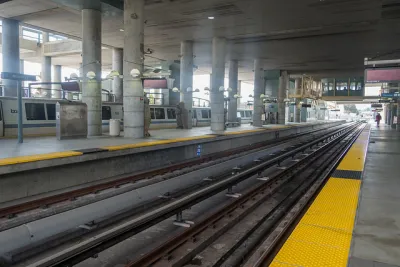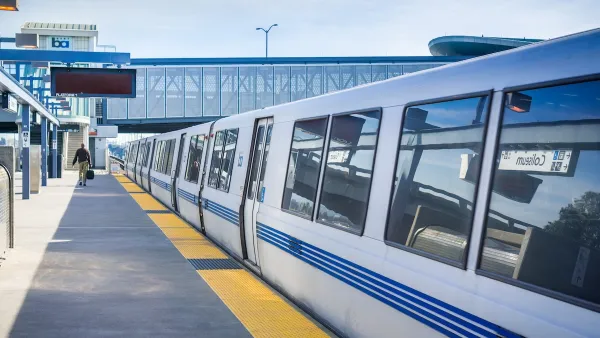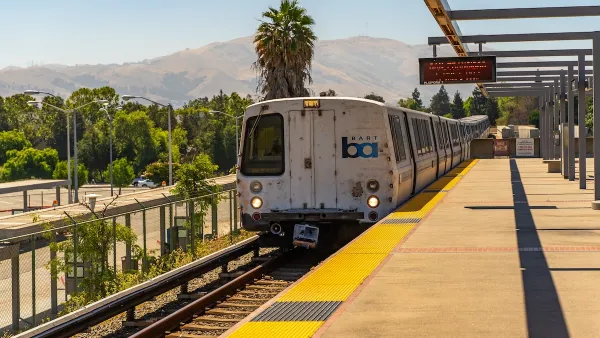Sam Raby argues that BART’s pay by distance fair structure exacerbates transit inequities.

San Francisco BART riders pay more if they go farther, but in a city as expensive as San Francisco many of those who ride the furthest have the least to spend. Sam Raby spoke to a local handyman, Mark Rogers Nelson, who would sometimes find himself priced out of transit. "Nelson was homeless up until recently, and he remarks that he often got 'stuck on one side' of the Bay during this period because of BART’s high fares," writes Raby. People with lower incomes are more likely to be found further from the center of San Francisco and may have to take longer commutes as a result. "And while the median income of the Bay Area Metro is around $97,000, more than 50 percent of workers in the Bay make less than $50,000 a year, according to the most recent census data," according to Raby.
BART leadership points out that pricing for service means riders pay for what they use. Flat fares mean riders taking short trips subsidize the service for everyone else. "While the New York MTA, the Chicago 'L,' and the Los Angeles Metro charge a flat fare to ride anywhere in their network, BART is one of three rapid-transit systems that charge passengers by distance. (Washington, D.C.’s WMATA and Philadelphia’s PATCO are the other two)" according to Raby. But systems like the CTA in Chicago do not cover the same distances as the BART, so they face a different set of challenges.
A related issue is the number of transit operators in the Bay Area. While area residents can pay for many different services with Clipper Fare cards, those services set their own fares and have their own policies. "In an effort to ease the burden on low-income riders, the Metropolitan Transportation Commission (MTC), the transportation planning and financing agency for the entire Bay Area, is pushing for region-wide system reforms," writes Raby.
FULL STORY: The inequity of pay-by-distance transit in the Bay Area

Analysis: Cybertruck Fatality Rate Far Exceeds That of Ford Pinto
The Tesla Cybertruck was recalled seven times last year.

National Parks Layoffs Will Cause Communities to Lose Billions
Thousands of essential park workers were laid off this week, just before the busy spring break season.

Retro-silient?: America’s First “Eco-burb,” The Woodlands Turns 50
A master-planned community north of Houston offers lessons on green infrastructure and resilient design, but falls short of its founder’s lofty affordability and walkability goals.

Test News Post 1
This is a summary

Analysis: Cybertruck Fatality Rate Far Exceeds That of Ford Pinto
The Tesla Cybertruck was recalled seven times last year.

Test News Headline 46
Test for the image on the front page.
Urban Design for Planners 1: Software Tools
This six-course series explores essential urban design concepts using open source software and equips planners with the tools they need to participate fully in the urban design process.
Planning for Universal Design
Learn the tools for implementing Universal Design in planning regulations.
EMC Planning Group, Inc.
Planetizen
Planetizen
Mpact (formerly Rail~Volution)
Great Falls Development Authority, Inc.
HUDs Office of Policy Development and Research
NYU Wagner Graduate School of Public Service




























